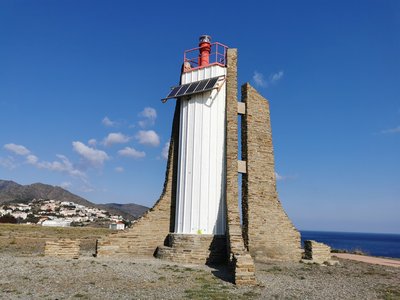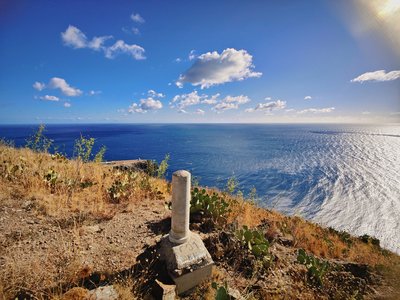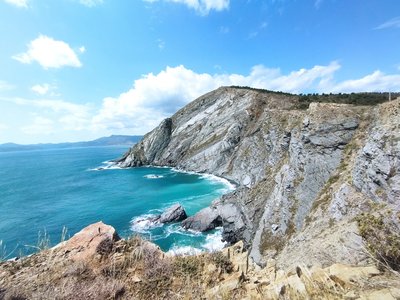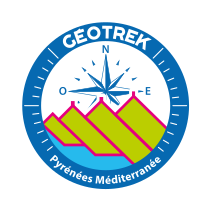(E12 - Sentier Littoral) Cerbère-PortBou

CERBERE
(E12 - Sentier Littoral) Cerbère-PortBou
Medium
2h
3,3km
+280m
-275m
Embed this item to access it offline
3 points of interest

Elisabeth Coste  Small patrimony
Small patrimonySolar Lighthouse of Cap Cerbère
The last lighthouse before the French-Spanish border, this structure, built in 1982, replaced the old Cerbère lighthouse, which was decommissioned in 1980. Also known as the “Solar Lighthouse” due to its power source—photovoltaic cells—it has a range of 15 nautical miles. To preserve the landscape, all external electrical wiring was excluded from the site. Don’t miss this lighthouse, recognizable by its grey stones and tall red top.
Camille Reynaud  Small patrimony
Small patrimonyboundary stone n°601
The boundary markers 601 and 601bis are part of the 602 boundary stones and crosses that delineate the Franco-Spanish border. These markers represent the last accessible land-based boundary points before the border reaches the Mediterranean Sea. The marker 602 is located in the Foradada Cave in the sea, between Cerbère and Port-Bou.
These boundary stones were established following the Treaty of the Pyrenees in 1659 and the Treaty of Bayonne in 1856, which set the current course of the border.
To reach boundary stone 601, one should follow the customs path (sentier douanier). Upon reaching the sign marking the end of the path section, continue straight ahead (following the yellow cross) rather than turning right onto the dirt track. This will bring you to the boundary stone, allowing you to experience this historical marker along the French-Spanish border.
Elisabeth Coste  Geology
GeologyThe cliffs of Cerbère
The Cliffs of Cerbère are among the highest in Europe and are part of the Banyuls to Cerbère Ecological and Faunistical/Floral Natural Area (Zone Naturelle d'Intérêt Ecologique Faunistique et Floristique des Falaises de Banyuls à Cerbère). Located in the southern part of the Côte Vermeille, this protected area stretches across 7 kilometers of coastline between Banyuls-sur-Mer and Cerbère, covering 140 hectares.
This rugged coastline is oriented from north-northwest to south-southeast and is predominantly made up of schist. The cliffs are sharply cut and are followed by numerous reefs and underwater islets. Several prominent capes punctuate the coastline, including the Cap de l'Abeille, Cap Redéris, Cap de Peyrefite, and Cap Canadell, which demarcate several sandy coves. The most significant of these is Peyrefite Beach.
The summit plateaus are covered with Mediterranean vegetation, including grasslands and maquis scrubland, which are often intersected by temporary streams. This diverse and ecologically significant landscape is a haven for a wide range of plant and animal species, making it an area of great natural interest.
